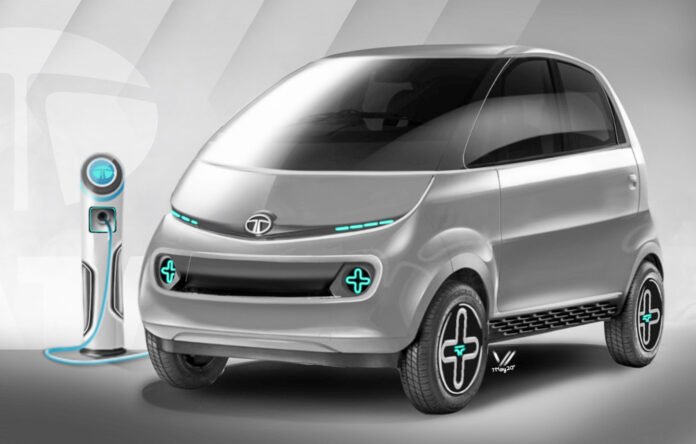The Tata Nano, launched in 2008 by Indian automotive giant Tata Motors, quickly garnered international attention due to its ambitious goal of providing an affordable and accessible car for the masses. Dubbed “the world’s cheapest car” at the time of its release, the Nano was designed with the vision of changing the way people in India and other emerging markets traveled. However, despite the excitement surrounding its debut, the Nano’s journey was filled with both success and challenges, making it a fascinating story of innovation, ambition, and market dynamics. https://guia-automovil.com/2019/08/01/tata-nano
In this article, we will explore the Tata Nano’s development, its impact on the automotive industry, its challenges, and the lessons learned from this groundbreaking venture.
The Vision Behind the Tata Nano
The Tata Nano was the brainchild of Ratan Tata, the then-chairman of Tata Group, who wanted to create a car that would make owning a vehicle affordable for the millions of Indian families who previously could not afford one. At that time, two-wheeler ownership was common among the Indian middle class, but cars were out of reach for most due to high prices and the cost of maintenance. The Nano aimed to fill this gap by offering a safer and more convenient alternative to motorcycles.
Ratan Tata’s vision was to create a compact, low-cost car that would be priced at an astonishing ₹100,000 (approximately $2,000) at the time of launch. This price point was revolutionary and challenged the existing norms of the automotive industry. The idea was not just to make a cheap car, but to make a car that could cater to the needs of the average Indian family, offering a combination of safety, efficiency, and value.
Design and Innovation in the Tata Nano
The Tata Nano was developed with extreme cost-efficiency in mind. Tata Motors took a radical approach to vehicle design by focusing on simplicity, weight reduction, and cost-effective manufacturing methods. The Nano was engineered as a four-door city car, compact enough to navigate crowded streets but spacious enough to seat four people comfortably.
Key innovations in the Nano included:
- Compactness and Size: Measuring only 3.1 meters in length and 1.5 meters in width, the Nano was a very small car compared to traditional models. This made it easy to maneuver in crowded urban environments.
- Engine and Performance: The Nano was powered by a 0.6-liter, two-cylinder engine located at the rear of the car. This design choice helped to maximize cabin space while keeping manufacturing costs low. The engine was efficient, offering a fuel economy of around 23.6 km/l, which made the Nano an ideal choice for budget-conscious consumers.
- Cost-Cutting Materials: The Nano used materials that were lightweight and inexpensive. The body of the car was made from sheets of low-cost steel, while the interior featured simple plastic components and fabric upholstery, helping keep costs down.
- Safety Features: Despite its budget price, the Nano was designed to meet basic safety standards, including seat belts and a rigid body structure. However, safety features in the Nano were limited compared to other vehicles in the market, which would later become one of the criticisms of the model.
The Launch and Initial Reception
The Tata Nano was first unveiled at the 9th annual Indian Auto Expo in New Delhi in 2008, where it generated a massive amount of media buzz and excitement. The car was positioned as an affordable, innovative solution for families in India, and the launch was met with enthusiasm.
However, the reception in the market was more mixed than anticipated. Tata Motors’ expectations were high, but the Nano’s sales were slower than expected in the first few years. This was partly due to the negative perception of the car as “too cheap,” which led some potential buyers to question its quality and safety. The Nano’s low price also led some to think it was a car for the economically disadvantaged, rather than a mainstream vehicle. Additionally, the initial marketing strategy did not adequately address concerns about the car’s image.
Moreover, the car was positioned as a “people’s car” but was also marketed as a safer and more comfortable alternative to motorcycles. While the Nano offered a safer option, its small size and lack of high-end features made it less appealing to those looking for more comfort and style.
The Challenges Faced by the Tata Nano
Despite the initial excitement, the Tata Nano faced several challenges that hindered its success in the market.
- Production Delays and Setbacks: The project suffered delays from the very beginning. The original plan was to produce the Nano in Singur, West Bengal, but political protests over land acquisition led Tata Motors to abandon the site. The production facility was eventually relocated to Gujarat, resulting in significant delays and increased costs.
- Safety Concerns: Over the years, the Nano faced criticism for its lack of safety features. The car’s basic safety features were sufficient for city driving, but it did not come with airbags, ABS, or other safety technologies that were becoming standard in even budget cars. In addition, several Nano vehicles were reported to catch fire, leading to a temporary recall. This further damaged the car’s reputation and raised doubts about its reliability.
- Changing Consumer Preferences: As time went on, consumer preferences began to shift. The desire for low-cost cars remained, but many buyers were looking for vehicles that provided more than just basic functionality. Competing models from other manufacturers, such as the Maruti Suzuki Alto and Hyundai Eon, offered more features and greater perceived value for a similar price.
- Economic Factors: In the years following the Nano’s launch, economic conditions in India began to change, and the country’s middle class saw a rise in disposable income. This shift led to an increased demand for more premium, feature-rich cars. The Nano’s minimalist approach began to feel outdated, and its position in the market became uncertain.
- Brand Image: Despite its affordability, the Nano never quite shed the image of being a “cheap” car. Many people associated it with poverty and viewed it as a product that lacked the prestige associated with car ownership. This perception made it hard for the Nano to break into the mainstream market.
The Decline and End of the Tata Nano
Over the years, Tata Motors tried several initiatives to revive the Nano’s fortunes. The company attempted to reposition the car with updated versions, such as the Tata Nano GenX, which featured power steering and improved styling. However, these efforts were not enough to reverse the Nano’s declining sales.
In 2018, Tata Motors officially discontinued the Nano after nearly a decade of production. By that time, the car had sold fewer than 300,000 units, a far cry from the millions that had been expected.
Legacy and Lessons Learned from the Tata Nano
Although the Nano’s story did not have a fairy-tale ending, it still offers valuable lessons about the complexities of mass-market innovation. Tata Motors learned the importance of aligning a product with consumer expectations and the significance of branding and perception in the success of an automobile. While the car was innovative in terms of its affordability and design, it struggled to communicate its value in a competitive and evolving market.
The Nano also highlighted the challenges of balancing cost-cutting with quality and safety. While Tata Motors had succeeded in creating an affordable car, they faced criticism for not delivering enough on other fronts like safety, reliability, and features.
Conclusion
The Tata Nano remains an iconic, albeit controversial, attempt to revolutionize the automotive industry. While it may not have achieved the mass success that Tata Motors had hoped for, it nonetheless served as a stepping stone toward understanding the dynamics of low-cost cars in emerging markets. The Nano’s legacy will always be remembered as an ambitious and bold attempt to bring affordable mobility to millions, and its lessons will continue to shape the future of affordable automobiles in developing economies.


